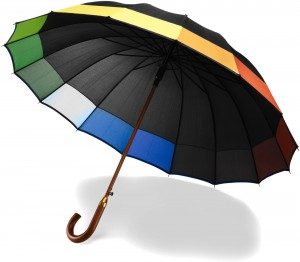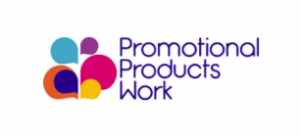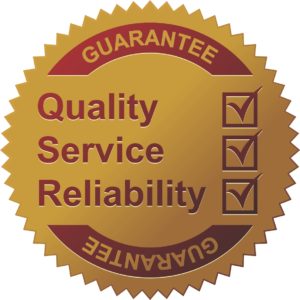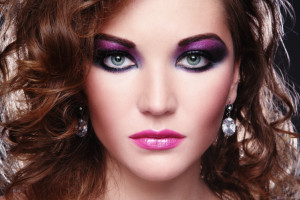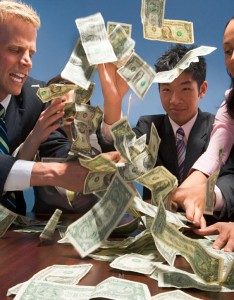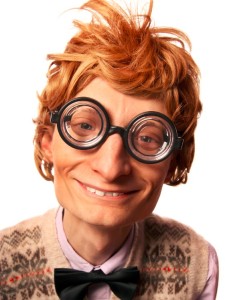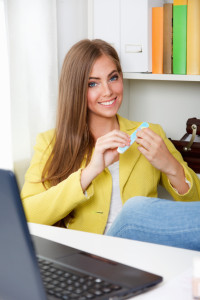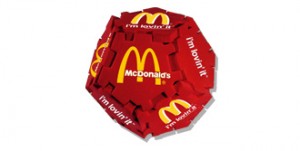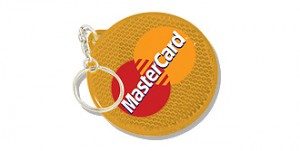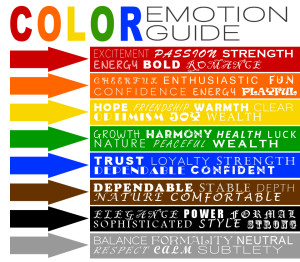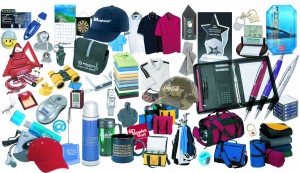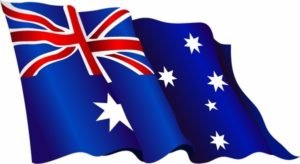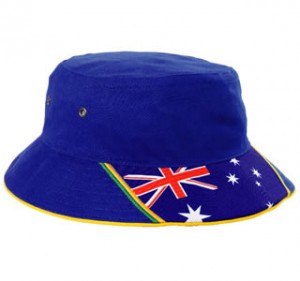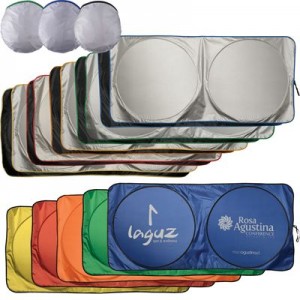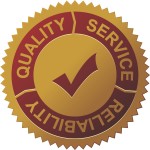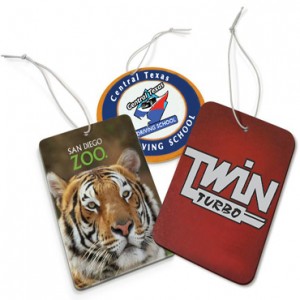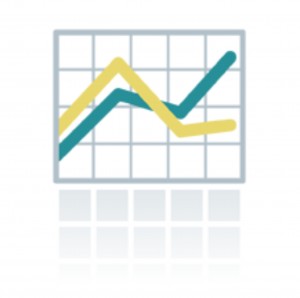There’s no denying how effective promotional products can be for businesses at trade shows – and it doesn’t matter what industry you’re in either. Why? Because the products are designed to get your name and branding in front of people, to help them remember you when they’re in need of your product or service.
Nowadays there is such a wide range of promotional products available to give out at trade shows, so you’ll be able to find something that suits your target audience and your budget.
Let’s start with the classics…
The most obvious choice of promo product for a trade show would be pens. Because, let’s face it, everybody needs a pen. It’s small enough that anybody can grab one; they don’t even need a bag for it – they can just pop it in their pocket, if needs be.
One thing to remember when giving away pens is that it shouldn’t feel too cheap – while we all need pens, nobody wants a cheap one. But don’t worry… this doesn’t mean you’re going to have pay through the nose for every promotional pen you give away. You can actually buy great quality pens at a really affordable price.
Another option that’s small enough to fit in a pocket would be USBs/FlashDrives. It might not be something that’s used everyday by the person you give it to, but it’s highly likely to be sat on their desk at work, just in case they need one. Which means when they’re racking their brains trying to think of who to help with their problem, they’ll spot the USB and get in touch.
Another classic option is mugs - but gone are the days of only being able to choose a bog-standard mug… you can now pick from a wide range of styles so you’ll be able to find something out there that suits your target audience and helps to make you stand out.
Then you have options that are more likely to be used out and about, increasing your brand awareness even further. This includes things like bags, lanyards, umbrellas, oyster card holders, sports bottles, and keyrings.
If you know you’re going to have a stall at a trade show during the wet, winter months, umbrellas are a great option. Think about it… how many times have you left the house and completely forgotten your umbrella, only to get caught in a downpour? Now imagine if you were given a free umbrella at a trade show..? You’d be more likely to remember that company, wouldn’t you?
So not only are you in their mind, when that person uses the umbrella, they’re going to cross the path of potentially hundreds of people in a day. And if the it stands out for all the right reasons, you’ll be in the minds of that see it – all for the cost of an umbrella!
The same goes for oyster card holders – it’s something practical that they’ll potentially use every day, so they’re reminded of your company on a daily basis, it fits in their pocket, and it will be seen by plenty of other people during their commute.
You can even look at watches as a possible option too. These are fantastic at really making sure your business stays at the forefront of your prospects mind. After all, how many companies do you know that give away a free watch at trade shows?
It’s a great way to make sure you stand out amongst all of the other stands there that day… and you’ll become a name that people see on a regular basis as they check the time. So to the end user, it’s an incredibly luxurious product to be given for free by a company that doesn’t really know them but for you, it’s an incredibly cost-effective way to increase your brand awareness on a wider scale – especially if you buy in bulk, as this really keeps the costs down.
And if you want to make sure everyone in the office is reminded of you on a regular basis, you can go for more practical items such as coasters, computer mice, mouse mats, folders, or even clocks!
There really is a great range of promotional products available nowadays, so if you’re struggling to decide which option works best for you, start thinking about what your target audience are most likely to use and what’s going to make you stand out.
Items such as USBs, umbrellas, and watches are great because they’re incredibly cost-effective items that are practical for the end user – plus they’re unlikely to be given out by other people at the trade show. Just because most people stick to pens, lanyards, and mugs doesn’t mean you have to!
Melisa Greenfield, October 2016
Melisa Greenfield is an experienced copywriter who's been working in the promotional industry for 2 years, helping to promote the benefits of using promotional products to increase brand awareness.
25 Insane (But True) Facts About Promotional Products
If you’re in the business of finding promotional products, you know the impact they can have on an organisation’s marketing efforts. But do you know these fun facts about promotional products?
- Eight in 10 consumers own between one and 10 promotional products.
- Fifty-three percent of these people use a promotional product at least once a week.
- Six in 10 of them keep promotional products for up to two years.
- Only one in five people will trash an unwanted promotional product.
- Before receiving a promotional product, 55 percent of people had done business with the advertiser. After receiving a promotional product, 85 percent of people did business with the advertiser.
- With nearly six thousand impressions, bags generate more impressions than any other promotional product in the U.S.
- Thirty-one percent of U.S. consumers own a promotional bag.
- At one-tenth of a cent, bags tie with writing instruments for the lowest cost per impression of any promotional product in the U.S.
- The first known promotional products – commemorative buttons – trace back to 1789 when George Washington was elected president.
- Fifty-three percent of the time, promotional products create a more favorable impression of the advertiser.
- Forty-eight percent of consumers would like to receive promotional products more often.
- Consumers hang on to promotional products for an average of 6.6 months.
- Sixty-nine percent of consumers would pick up a promotional product if they deemed it useful.
- Sixty-three percent of consumers pass along the promotional products they no longer wish to keep.
- Eighty-nine percent of consumers can recall the advertiser of a promotional product they’d received in the last two years.
- Ninety-one percent of consumers have at least one promotional product in their kitchen, 74 percent have at least one in their workspace, 55 percent have at least one in their bedroom.
- Seventy-seven percent of consumers say a promotional product’s usefulness is the number-one reason to keep it, with health and safety products, computer products and writing instruments ranked as the most useful.
- The top five buyers of promotional products are clients in education, finance, not-for-profit, healthcare, and construction.
- Wearables are the top product category, followed by writing instruments, bags, calendars and drinkware.
- The first promotional product tradeshow was held in 1914 – there were 32 exhibitors.
- Women are more likely to have bags, writing instruments and calendars, whereas men are more likely to own shirts and caps.
- Ownership of logoed outerwear is highest in the Midwest, with 15 percent of people owning an item.
- Logoed mugs in particular are more effective advertising than radio and television spots; 57 percent of people were able to recall the advertiser on a mug, versus 32 percent of radio and 28 percent of T.V.
- Adding a promotional product to the media mix increases the effectiveness of other media by up to 44 percent.
- Promotional products draw as many as 500 percent more referrals from satisfied customers than an appeal letter alone.
Are you still skeptical about the power or promotional products?
With thanks to PPAI
7 Golden Rules for Picking Great Promotional Products
Everyday customers old and new reach out to BONGO to get sound advice on what promotional products they should use for their business. But what makes a great promotional product? With 1000’s of lines available online, it can be daunting to get to grips with the options!
To help you, here are 7 golden rules for picking great promotional products:
QUALITY
Quality is the key. If a quality and useful promotional product is received by your client - they will certainly remember you.
DESIRABILITY
This is especially important to get right as gifting potential leads an item that isn’t desirable, may reflect your company in the same light: a desirable item denotes a company of quality!
USABILITY
Understand that usability key! Statistics show that 90.4% of people report currently owning or possessing a promotional product received in the last 24 months so it stands to reason that the most useful the item is, the more likely it is that your promotional product will stick around, day in, day out.
RELEVANCE
Understand that relevance is a big factor – and every sector is different. A branded lip balm for a Lawyer’s conference – is that the best fit? Would that gift be relevant and well received by those potential leads? Probably not. Understand your target audience and pick the most desirable items for the people you want to want to reach out to.
CREATIVITY
Use promotional products to make a lasting statement about who your company are, and what you offer. Take time to think of a creative idea that ties in with your brand marketing strategy – what special service do you offer? What goods can you deliver? Don’t be afraid to think outside the box – be fun! Are you a dentist? Why not send out some sugar-free sweets in a playful way? Trying to recruit people to sign up to your gym? Why not gift them a free water bottle so that you’re always on their desk, reminding them to get in touch and get fit – the possibilities are endless!
INTRIGUING
Try and see your product to introduce a bit of curiosity with your potential customers, we can help you with plenty of inspiration! For example, is a client a PR company? Why not send a branded pen with an inscription – ‘What could we write for you?’. Be playful, think outside the box. What would intrigue you to make that enquiry?
GOOD VALUE
However great all the other rules - just remember what would be best associated with your brand: VALUE.
Promo is not for me!
The client is always right…right? Well sometimes..... always…
We’re sure that on occasions, potential clients may say, ‘Promo? Nah, I don’t need promo’.
However, as an industry, we know differently. Here’s what we came up with...
I don't need promo because...
I like to blow our money on big spend marketing and even bigger hair.
This glitzy, shoulder padded, glamorous marketer thinks spending big is impressive. She likes to spend more than she needs to get her message across: she loves commercial radio (5.8 cents per impression), magazine ads (4.5 cents per impression), and TV (1.8 cents per impression). Why would she love tangible product marketing when it comes in at only 0.5 cent per impression? She's impressed by the wine list at the long lunch, not by marketing effectiveness.
We don't need promo because...
We're blood-suckers: you can only take a customer once, right?
These guys see people as walking wallets and use any means to separate the customer from their cash. Their motto is 'there are plenty of fish in the sea', so there is no need to show customers you appreciate them. That is why, with 64% of marketers rating promo as the channel most able to make a person feel appreciated, tangible product marketing is not for these guys. They prefer to stick with flat media like print and digital and avoid building any kind of customer connection at all.
I don't need promo because...
With all this charisma, all I need is a video on You Tube and people just chuck money at me!
It's hard to argue with sheer animal magnetism to drive a cause. This all-knowing marketer has it all, so he can scoff at his peers who have to work hard to drive loyalty. He knows that tangible product marketing is the best channel for invoking loyalty to causes or events (59%) - he just doesn't need the help. (and girls - he's single!).
I don't need promo because...
If my customers respond to my marketing, I’ll have to work harder
We all know how much easier it would be without those pesky customers. This marketer has it all worked out. She can impress her boss with flashy, high-profile campaigns and by using buzzwords, charts and spreadsheets, all the while avoiding the channel that is most effective in getting customers to take action - yes, you guessed it - tangible product marketing! Rated by 51% of marketers as the best channel at being able to get a person to take action, it kills TV at 19%, digital 11%, online 10% and print 9%. But those channels do let her chill on a Friday...
We don't need promo because...
The business is a front for the MOB
Understandably, if like one Mr Soprano, you want to fly under the radar and don’t want customers recalling your name, then you don’t want promo. The problem with tangible product marketing is the way it fosters brand recall and awareness, with 61% of marketers rating it as the best channel for constant message reinforcement compared to 15% for TV, 10% for print, 8% for digital and 6% for direct mail. See, too many witnesses.
Of course you need promo! In the real world, tangible product marketing if spend efficiently, creates positive brand perceptions, recall and results.
The statistics quoted in this article are from research conducted by BPMA and ASI.
Targeted Promotional Campaigns
Targeted Promotional Campaigns not only create better connections, they can even help redefine a brand or open up new markets. Research conducted by APPA shows that the current generation of consumers appreciates promotional products more than any generation before. This is because they offer a tangible value-add to their purchasing experience. A message passes from the brand to the consumer that says: “We are rewarding your brand loyalty. Thank you!”
Recent research supports this:
- 75 percent of human resource managers surveyed are using promotional products in recognition programmes
- 72 percent of marketing and HR managers say promotional products are very effective in motivation and retention of staff
- 100 percent of advertisers said adding a promotional product returned a favourable response to their campaign
- 69 percent of advertisers said promotional products increased brand interest
- 84 percent of advertisers said promotional products created more favourable impressions
A critical part of making an advertising campaign is determining a campaign theme as it sets the tone for the individual advertisements and other forms of marketing communications that will be used. The campaign theme is the central message that will be communicated in the promotional activities. The campaign themes are usually developed with the intention of being used for a substantial period but many of them are short-lived due to factors such as being ineffective or market conditions and / or competition in the marketplace and marketing mix.Targeted Advertising Campaigns are developed to achieve a particular goal or a set of goals. Such goals typically include establishing a brand, raising brand awareness, increasing the rate of conversions/sales. The degree of success or failure at reaching these goals is measured with analytic tools.
Colour and Emotion in Promotional Advertising
Colour and Emotion in Promotional Advertising affects us all. Every colour creates an emotional reaction in people. In design and in choosing promotional products we use colour to help guide emotion and give people an immediate feeling the first time they interact with something. In the design world, colours are purposely selected to meet a bigger goal. What is it that are we trying to say about a company, a product or a brand? Certain colours can attract attention and can convey the feeling of the company and it's branding without even having to say a word. Examples are McDonalds, Nike, Apple, Microsoft - just a few of the companies that don't need words - just icons and colours.
These are the common patterns with regard to colours and emotions that have been identified as to how people perceive colours and what impact this has when customers are purchasing products. There's no doubt that colours have a big impact on the end result - so next time you are purchasing your promotional product it would wise to think about what product colour would be best to truly represent your company or brand in the most accurate and appealing way.
Examples of colour meanings:-
- RED * energetic, attention-grabbing, exciting and aggressive
- YELLOW * cheerful, friendly, positive and energetic
- ORANGE * fun, playful, childlike, happy, energetic, modern
- BLUE * reliable, secure, trustworthy
- GREEN * trustworthy, refreshing, restful, soothing
- BROWN * stable, secure, durable
- BEIGE * durable, classic, neutral
- BURGUNDY * elegant, expensive
- PINK * romantic, soft, tender
- PURPLE * mysterious, sensual, regal
- LAVENDER * nostaligic, delicate
- GREY * classic, timeless, soothing
- WHITE * innocent, simple, clean, sterile
- BLACK * classic, elegant, serious, bold, powerful
Good advice to keep in mind when consideration your next range of promotional products.
Promotional Products in Hard Economic Times provide affordable, accountable and measurable advertising.
It is important to continue to acknowledge and thank clients, employees and suppliers.
Marketers spend more than $1.34 billion dollars (AUS) and $144 million (NZ) a year on promotional products for one reason, they work.
- 52% say their impression of a company is more positive after receiving a promotional product.
- 76% recall the name advertised on the product.
- 55% keep the item for more than one year.
- Nearly 50% of recipients use them daily.
- 52% of people do business with a company after receiving a promotional product
- Spend less, achieve more and remind people about the benefit of doing business with you.
Promotional Products in the Home:
- How many people have at least one promotional product in their kitchens? 91%
- How many have 2 or more in their kitchens? 81%
- In fact, the kitchen is the #1 place people use and keep their promotional products.
- (People spend on average 3-5 hours a day in their kitchens)
Promotional Products in the Office:
- How many people have at least one promotional product in their offices? 74%
- How many have 2 or more in their offices? 59%
- In the work place, more than half of people hold onto their promotional product from 1 to more than 4 years.
Reach & Recall:
- 71% of business travellers surveyed reported receiving a promotional product in a 12 month period.
- 33.7% of this group had the item on their person.
- 56% of people kept their promotional product for more than one year.
- 76.4% said they kept their promotional product because it was useful.
- 76.1% of the respondents could recall the advertisers name on the product.
How effective are Promotional Products in staff retention, motivation and brand interest?
- 75% of Human Resource mangers surveyed are using promotional products in recognition programs.
- 72% of marketing and HR managers say that promotional products are very effective in motivation and retention of staff.
- 100% of advertisers said that adding a promotional product returned a favourable response to their campaign.
- 69% of advertisers said promotional products increased brand interest and 84% it created more favourable impressions of the brand itself.
Understanding the medium:
- A product is just a product, until it is linked with a promotion, it then becomes an advertisement.
- The most successful advertising campaigns are the result of a planned strategy.
- Throwing products at your target market without that planning is a waste your marketing dollars.
- The product is only one component in the whole campaign.
- The creativity used to get a response is the key to increasing profits and promoting brands.
Successful campaigns require Strategic ‘logistical’ and ‘emotional’ roll out
- Action engagement triggers
- Data collection analysis
- Technical logo application knowledge
- Creating the difference between a ‘passive’ and ‘active’ promotion
For over 30 years BONGO has supplied promotional products to Australian Businesses and is one of Australia's leading suppliers of innovative and quality promotional products.
On Australia Day we come together as a nation to celebrate what's great about Australia and being Australian. It's the day to reflect on what we have achieved and what we can be proud of in our great nation. It's the day for us to re-commit to making Australia an even better place for the future. On this day, Australian adorn themselves with all sorts of Aussie promotional products to celebrate the day. Let us help you by putting some suggestions together for your next Australia Day corporate event or celebration. Bongo has a large range of Australiana products that are perfect not only to celebrate Australia Day, but to use throughout the year. Products include Aussie clothing, Aussie flag bags, Aussie flag keyrings, Aussie Flag Pins, Aussie flag shirts, Aussie caps & hats - as well as a huge range of Aussie supporter ideas.
Australia Day is the official National Day of Australia. Celebrated annually on 26 January, it marks the anniversary of the 1788 arrival of the First Fleet of British Ships at Port Jackson, New South Wales, and the raising of the Flag of Great Britain at that site by Governor Arthur Phillip. In present-day Australia, celebrations reflect the diverse, multicultural society and landscape of the nation, and are marked by community and family events, reflections on Australian history, official community awards, and citizenship ceremonies welcoming new immigrants into the Australian community.
The meaning and significance of Australia Day has evolved over time. Unofficially, or historically, the date has also been variously named "Anniversary Day", "Invasion Day", "Foundation Day", and "ANA Day". 26 January 1788 marked the proclamation of British sovereignty over the eastern seaboard of Australia (then known as New Holland).[4] Although it was not known as Australia Day until over a century later, records of celebrations on 26 January date back to 1808, with the first official celebration of the formation of New South Wales held in 1818. On New Year's Day 1901, the British colonies of Australia formed a Federation, marking the birth of modern Australia. A national day of unity and celebration was looked for. It was not until 1935 that all Australian states and territories had adopted use of the term "Australia Day" to mark the date, and not until 1994 that the date was consistently marked by a public holiday on that day by all states and territories.
In contemporary Australia, the holiday is marked by the presentation of the Australian of the Year Awards on Australia Day Eve, announcement of the Australia Day Honours list and addresses from the Governor-General and Prime Minister. It is an official public holiday in every state and territory of Australia, unless it falls on a weekend in which case the following Monday becomes a public holiday instead. With community festivals, concerts and citizenship ceremonies, the day is celebrated in large and small communities and cities around the nation. Australia Day has become the biggest annual civic event in Australia.
Automotive Promotional Products
With people these days spending so much time in their cars, it is no wonder that products associated with cars make brilliant automotive promotional products. From key rings to outdoor products your clients will thank you every time they reach for that umbrella, or for that travel mug with your logo. Choose well and they will associate your logo with that wonderful picnic they had with their family... with their time laying under that beach umbrella... or with the first aid kit that was there when they needed it. Whatever it is, your logo could be there when it matters most. Check out a vast range of car related promotional products.
The interior of a closed car parked in a non-shaded spot exposed to extensive sunlight can sustain sun and heat damage. Sunlight passing through the car's windshield produces the greenhouse effect, heating the interior to a temperature much higher than the outside air. Excessive heat and prolonged exposure to direct sunlight can make the dashboard fade and eventually crack, cause seat upholstery discoloration and aging, etc.
The windshield glass itself blocks most of the UV light and some of the infrared radiation. But it can't protect from the visible light that mostly penetrates through it and gets absorbed by the objects inside the car. The visible light that passes into the interior through the windshield is converted into the infrared light which, in its turn, is blocked by the glass and gets trapped inside, heating up the interior. Windshield sun shades have a reflective surface to bounce the light back, reducing the interior temperature.
Check out our custom made promotional air fresheners.
Our customised car air fresheners are Air Fresheners that are made from absorbent cotton paper. Showcase your brand with these attractive advertising incentives. Air Fresheners are a great way to let your customers advertise your company details or product. The standard size is 80mm x 80mm and your design can be cut to shape within that area. We can also custom make to any size with full colour printing on both sides. The hanging accessory can be a white or black string or a plastic hook. Custom printed packaging is available with full colour printing.
- minimum order is 500 units
- 45 fragrances to choose from
- production timing on this product is around 3-4 weeks
Air fresheners are consumer products used in homes and cars emitting fragrances. Air freshening is not only limited to modern day sprays, air freshening also can involve the use of organic and everyday house hold items. Although air freshener is primarily used for odor elimination some people simply use air freshener for the pleasant odors they emit.
Fragrances available are: banana, green apple, pineapple, christmas tree, jasmine, tulip, cooler water, ocean, honey, blueberry, honey peach, starfruit, chrysanthemum, pine, violet, forest, bubblegum, milk, cherry, lemon, strawberry, cinnamon, mint, Chanel fragrance, forest berry, coffee, milk tea, citrus, mango, watermelon, lavender, rose, Chanel No. 5, nature, ginger, red wine, coconut, papaya, carnation, lily , sunflower, cologne fragrance, new car fragrance, green tea and sweet down. If the fragrance you require is not in this list, please contact us.
Promotional Products provide affordable, accountable, measurable advertising.
In these economic times - now more than ever, marketers need to reward and build brand loyalty. It is important to continue to acknowledge and thank clients, employees and suppliers.
Marketers spend more than $1.34 billion dollars (AUS) and $121 million (NZ) a year on promotional products for one reason, they work.
- 52% say their impression of a company is more positive after receiving a promotional product gift
- 76% recall the name advertised on the product
- 55% keep the item for more than one year
- Nearly 50% of recipients use them daily
- 52% of people do business with a company after receiving a promotional product
- Spend less, achieve more and remind people about the benefit of doing business with you
Promotional Products in the Home:
- How many people have at least one promotional product in their kitchens? 91%
- How many have 2 or more in their kitchens? 81%
- In fact, the kitchen is the #1 place people use and keep their promotional products.
(People spend on average 3-5 hours a day in their kitchens)
Promotional Products in the Office:
- How many people have at least one promotional product in their offices? 74%
- How many have 2 or more in their offices? 59%
- In the work place, more than half of people hold onto their promotional product from 1 to more than 4 years
Reach & Recall:
- 71% of business travellers surveyed reported receiving a promotional product in a 12 month period
- 33.7% of this group had the item on their person
- 56% of people kept their promotional product for more than one year
- 76.4% said they kept their promotional product because it was useful
- 76.1% of the respondents could recall the advertisers name on the product
How effective are Promotional Products in staff retention, motivation and brand interest?
- 75% of Human Resource mangers surveyed are using promotional products in recognition programs
- 72% of marketing and HR managers say that promotional products are very effective in motivation and retention of staff
- 100% of advertisers said that adding a promotional giveaway returned a favourable response to their campaign
- 69% of advertisers said promotional products increased brand interest and 84% it created more favourable impressions of the brand itself
Understanding the medium:
- A product is just a product, until it is linked with a promotion, it then becomes an advertisement
- The most successful advertising and marketing campaigns are the result of a planed strategy.
- Throwing products at your target market without that planning is a waste your marketing dollars
- The product is only one component in the whole campaign
- The creativity used to get a response is the key to increasing profits and promoting brands
Successful campaigns require:
- Strategic ‘logistical’ and ‘emotional’ roll out
- Action engagement triggers
- Data collection analysis
- Technical logo application knowledge
- Creating the difference between a ‘passive’ and ‘active’ promotion

